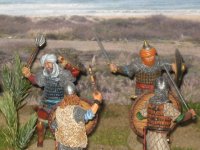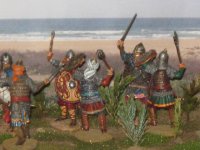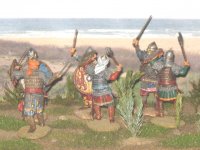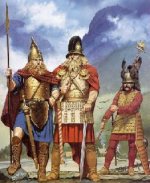Hector of Troy
Private 2
- Joined
- Apr 17, 2010
- Messages
- 113
Here is a paragraph I took from Wikipedia pertaining to Viking Expansion. In 844 the Vikings attacked Al-Andalus, the administrative area of the Iberian Peninsula ruled by Muslims. They sacked Lisbon, Cádiz and Medina Sidonia, and then captured Seville. However, the Muslims counterattacked and defeated them. The survivors fled. The Vikings carried out further raids on Al-Andalus but the Muslims fought back effectively. So I decided to throw a little display together with my FL Vikings and FL Muslims that I borrowed from my Crusader display. Its not a permanent display so I didn't cover the bases. This will do until Matt unveils his opposition for the FL Vikings. My little display has the Vikings and Muslims doing battle near the coast. Evidence for Norse ventures into Arabia and Central Asia can be found in runestones erected in Scandinavia by the relatives of fallen Viking adventurers. Several of these refer to men who died in "Serkland" (Arabia)
Meanwhile, in the Eastern Mediterranean the Norse (referred to as Rus') were viewed more as "merchant-warriors" whose were primarily associated with trade and business. In particular, Arab scholars such as Ibn-Fadlan recount Norse trade expeditions to Baghdad, a major center of the Islamic world. Indeed, one of the only detailed accounts of a Viking burial come from Ibn-Fadlan's account. At times this trading relationship would break down into violence – Rus' armadas raided in the Caspian on at least three occasions, in 910, 912 and 943.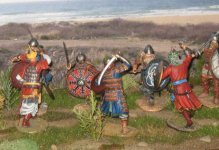
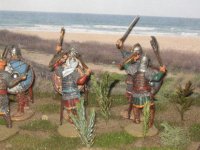
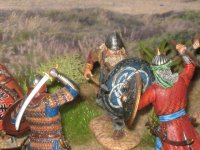
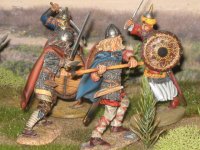
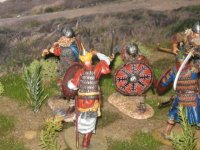
Meanwhile, in the Eastern Mediterranean the Norse (referred to as Rus') were viewed more as "merchant-warriors" whose were primarily associated with trade and business. In particular, Arab scholars such as Ibn-Fadlan recount Norse trade expeditions to Baghdad, a major center of the Islamic world. Indeed, one of the only detailed accounts of a Viking burial come from Ibn-Fadlan's account. At times this trading relationship would break down into violence – Rus' armadas raided in the Caspian on at least three occasions, in 910, 912 and 943.







